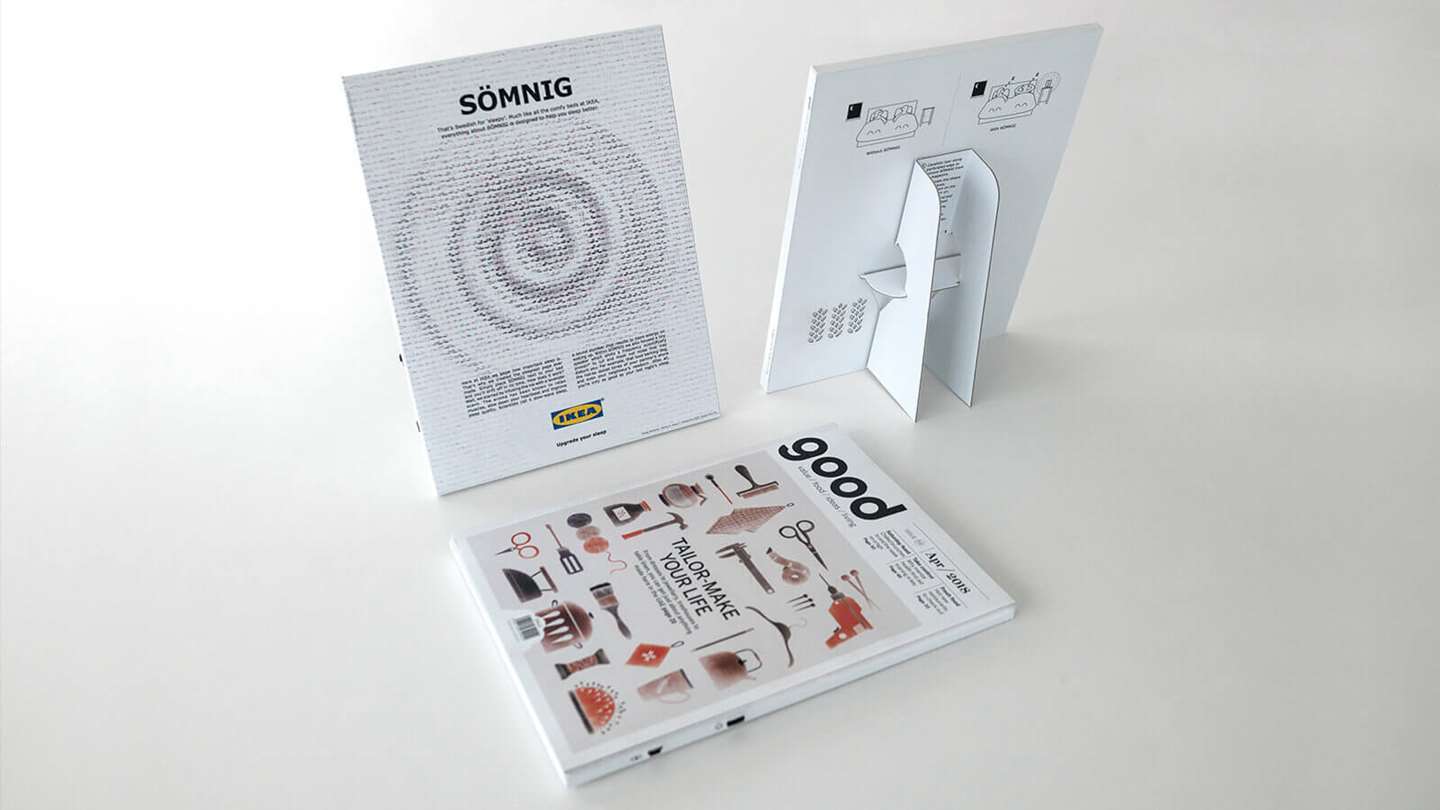The power of print at a glance:
- A well-executed print ad creates a clear point of difference in a cluttered, chaotic media landscape
- Multisensory marketing boosts brand recall and leaves a lasting emotional impression
- Marketers should “spend more time thinking about biology – and less time obsessing over technology”
Sleep is something we all… do. But for some of us, it can also be something we don’t do well.
When IKEA – self-styled “experts in sleep” – commissioned research into the sleeping habits of UAE citizens, it found that nine in ten people were falling short of the recommended eight hours a night.
A third (32.42%) were “seriously sleep deprived”.
No biggie, right? Wrong. A separate study, by Dr. Epameinondas Fountas of the Onassis cardiac surgery centre in Athens, reckons sleep-deprived adults are more likely to suffer a stroke.
And in his bestseller, Why We Sleep, British neuroscientist Matthew Walker argues that a proper night’s sleep can even help to ward off cancer – while making us happier, healthier and more attractive.
Creating an “immersive sleep cocoon”…
A soporific solution was clearly called for – and, in the wake of IKEA Sweden’s Cannes Lions-winning ‘Pee Test’ it came in the form of a smart, simple print ad that promised to help Emiratis “upgrade their sleep”.


